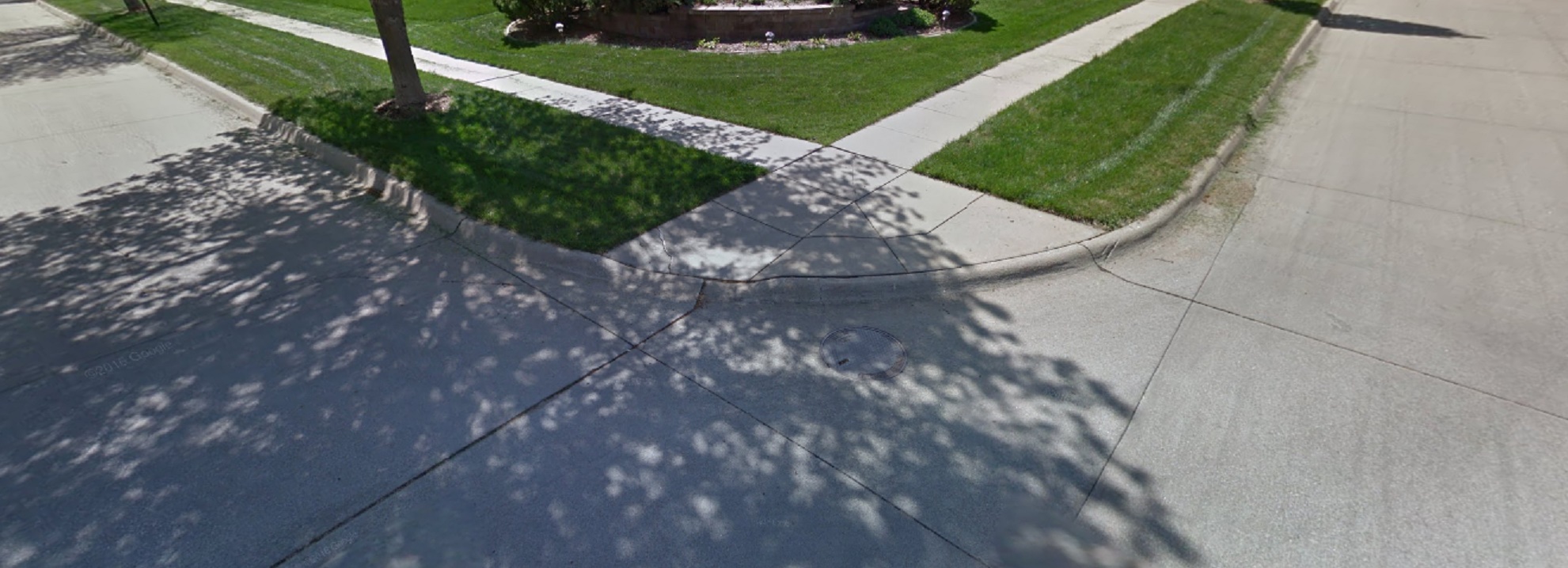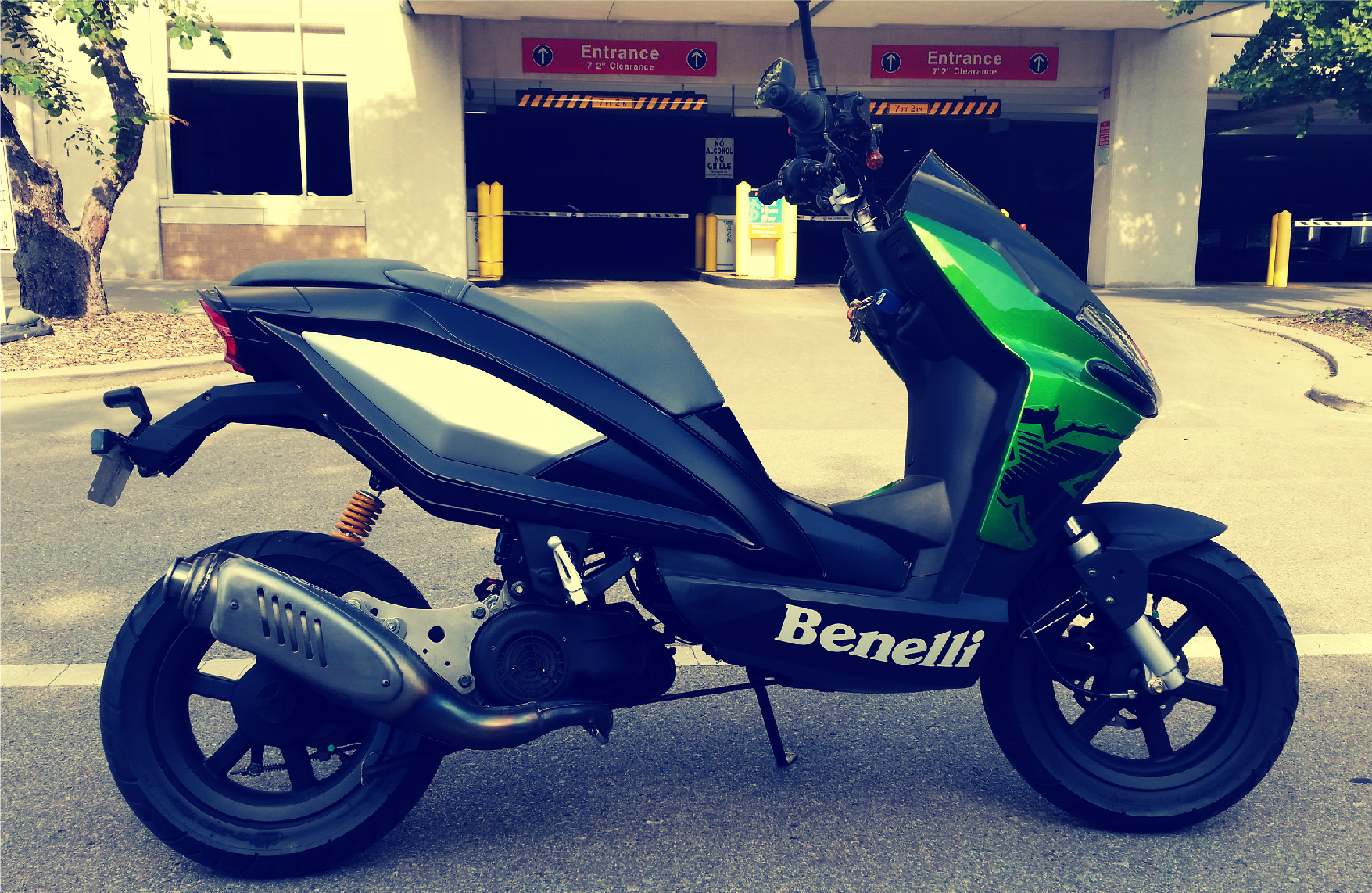BENELLI QUATTRONOVE SCOOTER
(70CC STREET TUNE)
49x – X50i – Andretti
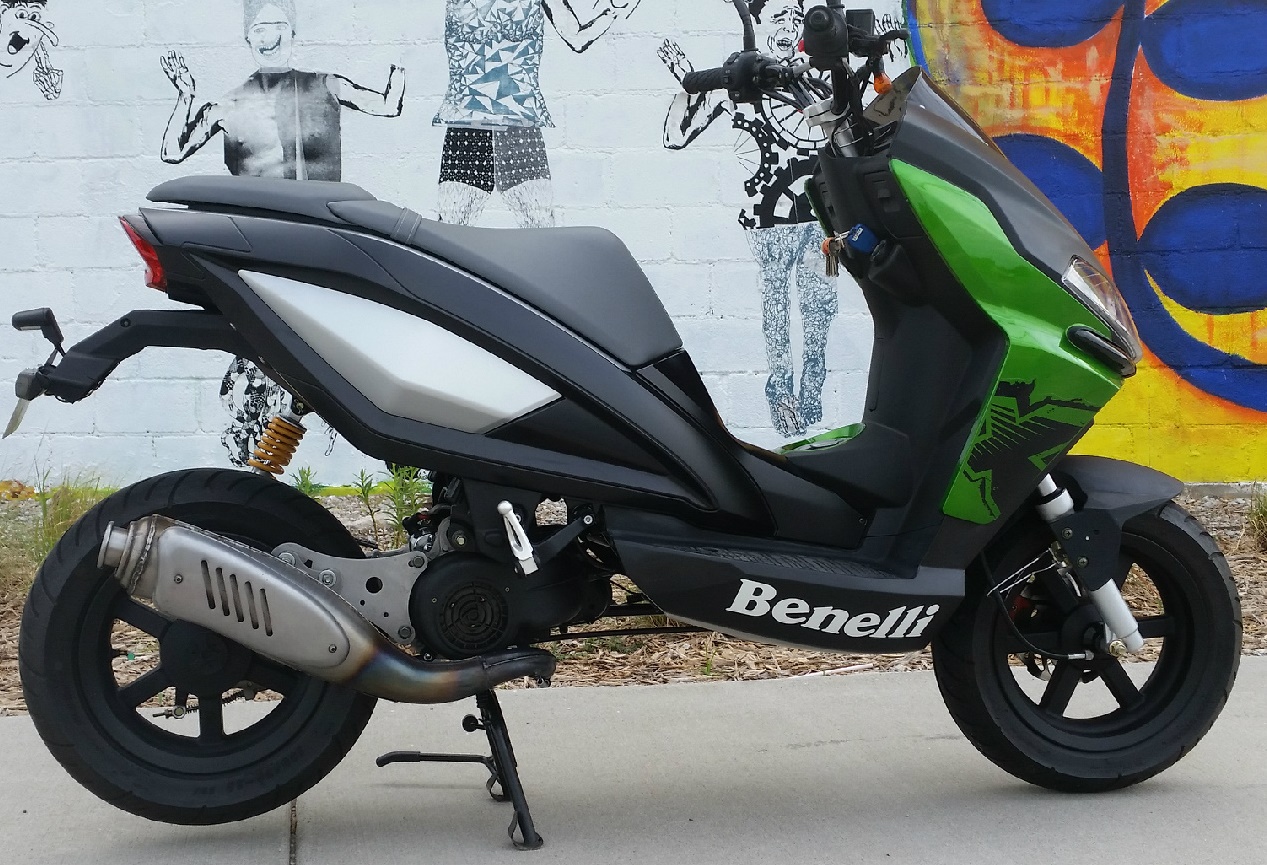
70CC STREET TUNE (TORQUE MONSTER)
BENELLI QUATTRONOVE
50 MPH STREET TUNE FORMULA
PREFACE
All aftermarket 70cc cylinders are to some degree ‘sport’ tuned. Compared to the stock 50cc cylinder, the common 70cc sport tune sacrifices a great deal of relative low RPM torque to make more high RPM power.
The common ‘sport tuned’ 70cc scooter generally does not move until the tach reaches at least 6000 RPM. The engine is always screaming at higher engine RPM during launch, acceleration and cruising speed. However, when we tune every aspect of the machine to produce relative torque, we can restore a great deal of that 5000-6000 RPM pulling power.
The street tune pulls like a damn train from 5500-7500 RPM. It has an extremely wide 5000 RPM to 9000 RPM power-band.
Lower RPM operation and the lower tone of the street exhaust serves to make the bike seem ‘bigger’ than it actually is. One might say that it performs like a restricted 125cc machine, rather than a screaming 70cc machine.
70CC STREET TUNE
ENGINE
ENGINE MODEL : QJ-1E40QMB / 12mm Wrist Pin Type
The stock 50cc cylinder has a very wide, street-able power-band. (3500-7000+ RPM) It produces maximum torque at 5000 RPM, while producing maximum power at 7000 RPM.
TUNE UP: Replace 50cc cylinder, cylinder head and piston with Malossi Sport 70cc Cylinder Kit (Minarelli 12mm) – $125
AVAILABLE HERE

The less expensive Asian 70cc sport cylinder kits look the same, but, many come with a 2mm plus squish clearance. This severely decreases relative torque.
The slightly more expensive Malossi (Italian name brand / quality) cylinder kit comes pre-tuned with a tighter squish clearance, which makes excellent torque / power right out of the box. It’s well worth the extra thirty dollars. The ‘Malossi Sport’ air cooled cylinder is well known for it’s street torque and reliability.
Replace the 12mm wrist pin bearing every time you have the top end off. This bearing is the weakest point in the engine.
Wrist Pin Needle Bearing (12mm) JOG Minarelli 1E40QMB
Heavy Duty Replacement: Wiseco B1043
I.D. 12mm
O.D. 16mm
Length 15mm
SPARK PLUG
NGK BR8HS
CDI IGNITION
Benelli Quattronove comes with an unrestricted CDI from the factory. There is nothing to be gained by use of an aftermarket CDI.
CARBURETOR & PREMIX CONVERSION
The Benelli Quattronove’s stock carb is the common PZ19JB (12mm) Chinese Mikuni / Jog clone carb. $18 new on ebay. It’s a great fuel economy carb with fair performance.
TUNE UP: Replace with Malossi 19mm PHBG Carburetor Kit – $120
This is the highly coveted Italian made Dellorto 19mm PHBG carburetor sold under the Malossi name, that contains the proper AU two stroke atomizer. This carb is pre-tuned for the two stroke 1E40QMB / JOG / Minarelli Horizontal platforms.
AVAILABLE HERE
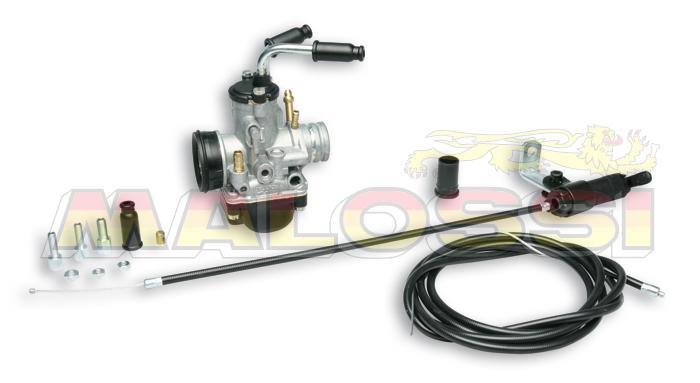
JETTING: The Malossi / Dellorto carb comes with a 72 main jet. Using this jet provides precise jetting in my environment with the street tune setup.
Precise jetting may involve trying i.e. 72, 75 and 77 main jets.
In my summer environment;
72 Main Jet: Crisp jetting / lighter brown spark plug. (great power)
75 Main Jet: Slightly rich with darker brown plug. (good power)
77 Main Jet: Too rich, black spark plug, sputtering on hot days. (fair power)
The carb comes with the adjustment clip in the top groove of the needle valve. This is the leanest needle position. Move the adjustment clip down to the second groove from the top, which raises the needle one adjustment richer.
Raising Needle / Lowering Clip = Richer Mid Throttle
Lowering Needle / Raising Clip = Leaner Mid Throttle
Do not touch the air screw on the carb. It’s flow set to maximum performance at the factory. This carb is a high quality preset instrument.
Do not forget to plug those brass vacuum line connections on the top of the carb.
I plugged these connections with ‘black rubber vacuum cap assortment’ from an auto parts store.
REMOVE THE SNORKEL FROM THE AIR-BOX
The new carb outflows the stock 50cc snorkel on the top of the air-box. Performance is terrible with the 50cc snorkel.
The Benelli air-box is a cloned Yamaha JOG air-box. Yamaha engineers knew what they were doing when they designed this air-box, as it provides maximum mid-range torque, with the top end hit of an open filter, in street / mild sport tuning platforms.
Yamaha engineers used this same air-box on 90cc models of the same engine, by using a snorkel with a bigger port. Thus revealing the stock air-box with snorkel removed has more than enough flow for a 70cc street engine.
NOTE: The stock air-box’s rubber boot is a very tight fit on the 19mm carb. I used a dremel tool / drill with a stone bit, to file down the inner diameter of the air-box’s rubber boot about 1mm. This allowed the boot to go over the carb much easier.
DO NOT USE AN OPEN FILTER!
Using an open filter with 70’s size main jets will overheat / damage the engine!
A K&N / UNI Foam / open filter set-up requires a significantly bigger main jet (85-120?) and possibly a richer needle valve setting.
On street and mild sport tuned set-ups, an open filter sacrifices a significant amount of relative street torque, for little or no increase in relative top end power. An open filter is also very loud.
THROTTLE CABLE
The stock throttle cable / oil injection cable combo will NOT work with the new 19mm carb. It will install, but, the cable will be too short to pull the new carb’s throttle slide more than 3/4 throttle. This is why we convert to premix and use the custom throttle cable that comes with the carb kit.
The cable is designed to be custom cut and fitted. I had to cut about an inch out of the custom cable for a perfect fit. Cut little by little until it’s a perfect fit.
CONVERT TO PREMIX
To convert to premix, simply plug the end of the oil injection line that connected to the old carb. This is a safe / common practice. The remaining oil in the injector pump will lubricate itself while it does nothing.
Advanced tuners will remove the flywheel and stator, giving them full access to the oil pump, where they remove the plastic drive gear that drives the oil pump.
Mix quality two stroke oil with gasoline at:
30:1 ratio for heavy thrashing.
40:1 ratio for light street use.
THE PERFORMANCE OF THE MALOSSI 19MM CARB IS SHOCKING!
Without exaggeration; this carb doubles the torque / performance feel of the bike. With the stock carb; snapping the throttle wide open at 5 MPH would calmly increase the speed of the bike. With the Malossi 19mm carb; snapping the throttle wide open at 5 MPH will cause the bike to pop a 3-6 inch wheelie, before taking off rather briskly.
The performance improvement of this carb is like going from a tame 70cc scooter, to a restricted 125cc motorcycle.
This drastic increase in performance comes at the cost of decreased fuel mileage.
If you are getting 60 miles per gallon with the stock carb / oil injection, you may encounter as low as 30-40 miles per gallon with the new carb / premix. While thrashing the bike on very hot summer days, you may see as low as 20-30 miles per gallon.
For reference; a carbureted 125cc two stroke motocross bike gets around 15 miles per gallon. This can be quite shocking to those outside of the two stroke realm.
EXHAUST
STOCK EXHAUST: The factory exhaust is a catalytic converter disguised as a expansion chamber / ‘racing pipe’. It gets dangerously hot and plays a role in causing 70cc soft seizure / overheating. It weighs a ton. It belongs in the garbage.
TUNE UP: Replace stock exhaust with Stage6 Street exhaust for Minarelli horizontal engines. The Stage6 Street exhaust is an absolute torque monster. (excellent power below 7000 RPM) The Stage6 Street exhaust has a low tone growl that makes the engine sound ‘bigger’ than it actually is.
This exhaust is also sold under the name ‘Turbo Kit TKR’.
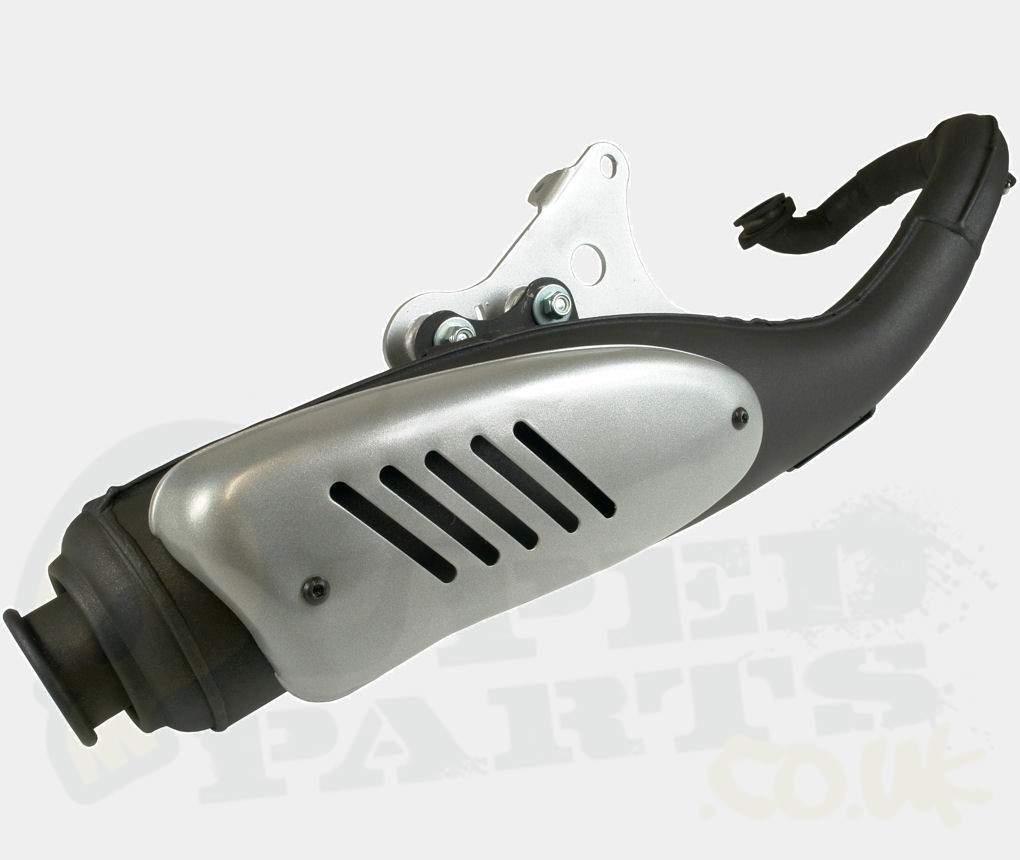
REMOVE EURO SPEC RESTRICTION FROM EXHAUST
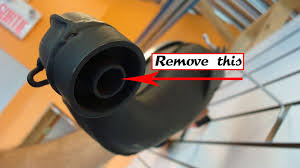
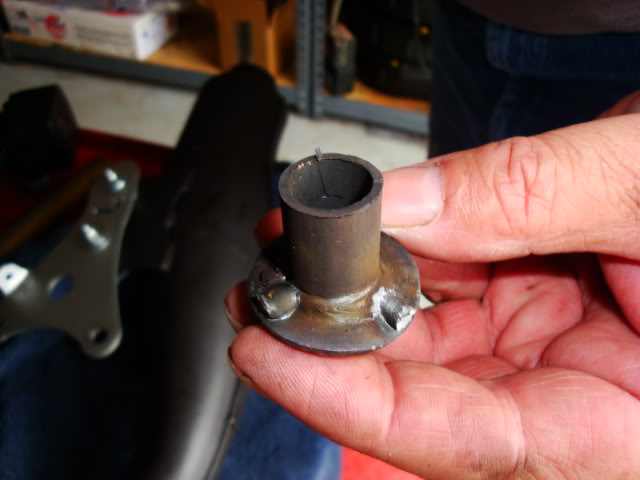
Or replace with any ‘Minarelli Horizontal / 1E40QMB’ exhaust from the ‘Touring’ category, that makes maximum power around 8000 RPM.
Options: LeoVince Touring, Malossi Wild Lion, V8 Racing, Technigas Silent Pro, Naraku Traffic, Tecno Streetline etc.
The cheapest generic street exhaust is better than the stock catalytic converter.
The ‘street’ / ‘touring’ line of scooter exhausts make decent power from 5000-8500 RPM. This provides a wide power-band with lots of torque / usable power at lower RPM.
The ‘sport’ line of exhausts (mild expansion chamber) make great power at 7000-9000 RPM. A narrow power-band with a stronger hit at higher RPM, at the cost of losing a significant amount of torque / usable power below 7000 RPM.
CVT TRANSMISSION
1E40QMB 16mm / 21mm Variator
1E40QMB 16 Spline Clutch
MITSUBOSHI 16.6 X 792 Belt
TUNE UP: The Benelli Quattronove’s CVT is ‘unrestricted’ from the factory, but, it needs a few upgrades to better serve the way the 70cc cylinder makes power.
VARIATOR: Remove the stock roller weights and install 15X12 4 Gram Slider Weights. – $20
AVAILABLE HERE
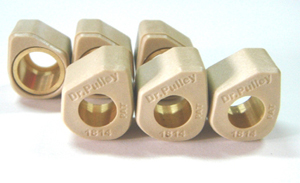
The stock roller weights work perfectly, but, slider weights will lower engine RPM slightly at cruise speeds, while providing the same amount of acceleration and hill climbing ability.
In this application sliders make the bike more calm and street-able, while rollers are inherently peaky. It’s a matter of preference.
For tuning reference; (180 pound rider) I tried some 5.5 gram slider weights. These weights were too heavy, causing the bike to lose some degree of hill climbing and roll on acceleration performance.
CLUTCH: Replace the three stock clutch springs with yellow ‘Yamaha JOG 1500 RPM Clutch Springs’. – $10
AVAILABLE HERE
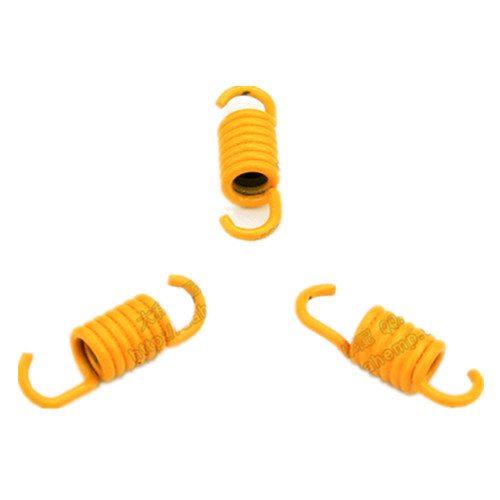
If you do not replace the stock clutch springs, 0-10 MPH acceleration will be terrible.
The stiffer 1500 RPM clutch springs cause the clutch to engage at a slightly higher RPM, causing the bike to launch at a slightly higher RPM, which better compliments the way the 70cc cylinder makes it’s power at a slightly higher RPM.
NEVER USE CLUTCH SPRINGS FROM CHINA! Aftermarket clutch springs from China are not much stiffer than stock springs. Only use clutch springs made in Taiwan or Europe, because they are much stiffer than stock. KOSO Taiwan and Malossi Italy make higher quality clutch springs.
Replace the stock clutch contra spring with a ‘KOSO 1000 RPM Contra Spring For Yamaha Zuma’. – $13
AVAILABLE HERE
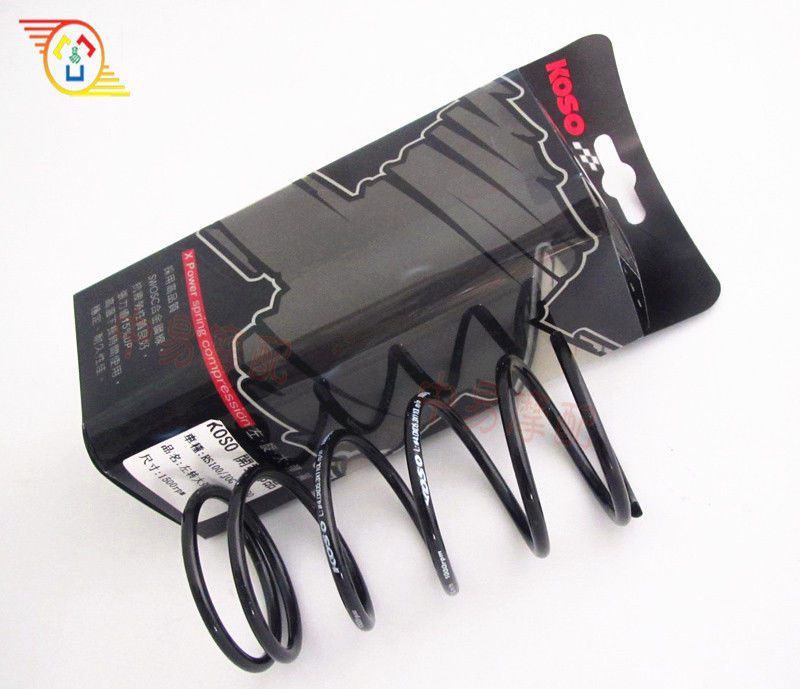
The stiffer 1000 RPM contra spring will raise engine RPM slightly while riding, to better compliment the way the 70cc engine makes it’s power at a slightly higher RPM.
CLUTCH TUNING NOTES: When I tried the common blue 1000 RPM clutch contra spring, I found that engine RPM was too low at all speeds. When I tried the yellow 1500 RPM clutch contra spring, I found that engine RPM was rather high at all speeds.
The KOSO black 1000 RPM contra spring performs as you would expect from a 1200 RPM spring. It has a little more tension than the common blue 1000 RPM contra spring, while having far less tension than the common yellow 1500 RPM contra spring. This gives me better hill climbing ability than the blue 1000 RPM contra spring, without the excessively high RPM of the yellow 1500 RPM contra spring.
DRIVE BELT
MITSUBOSHI 16.6 X 792
When it’s time to replace the drive belt on the Quattronove, you must get another MITSUBOSHI 16.6 X 792 Belt.

DO NOT USE A 788 BELT!
If you use the market suggested, less expensive, shorter 788 X 18 30 replacement belt, you will lose top speed and raise engine RPM at cruise speeds.
GEARING
A scooter is only as top speed fast as it’s maximum RPM and final gearing.
My Benelli QuattronoveX X50i (12 inch wheels model) has a 13.5 : 1 final drive gear ratio, which is essentially 35 MPH gearing. This 13.5 : 1 ‘granny low’ like gearing is a major cause of engine soft seize, because the engine is screaming 9000+ RPM when you want to ride 40+ MPH.
Installing different gearing in a scooter is not so much about improving top speed, as it is about lowering engine RPM at higher cruise speeds. If you install taller gearing and expect to ride at those faster speeds at 9000+ RPM, it may soft seize the same as it would at lower speeds with stock gearing.
TUNE UP: Replace primary transmission gears with ‘Stage6 15/50 up gears for Chinese Minarelli scooters CPI Keeway’. – $75
AVAILABLE HERE
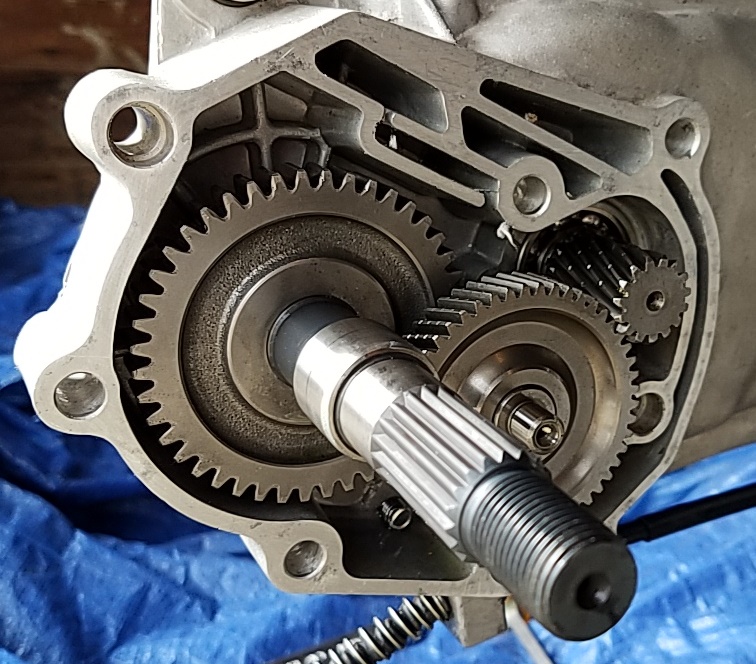
RESULTS: Installing Stage6 15/50 ‘up gears’ changed the bikes final drive ratio to 11.3 : 1.
Stock Gearing – 8000 RPM @ 35 MPH (cruise speed)
11.3 : 1 Gearing – 7300 RPM @ 35 MPH
Stock Gearing – 8700 RPM @ 40 MPH
11.3 : 1 Gearing – 7800 RPM @ 40 MPH
11.3 : 1 Gearing – 8000 RPM @ 42 MPH (cruise speed)
Stock Gearing – 9000+ RPM @ 45 MPH (soft seize)
11.3 : 1 Gearing – 8500 RPM @ 45 MPH (fast cruise speed)
Stock Gearing – 10,000 RPM @ 49 MPH downhill (inevitable soft seize)
11.3 : 1 Gearing – 9500+ RPM @ 51+ MPH downhill (possible soft seize)
The 11.3 : 1 Final Drive Ratio Is Amazing! The stock 13.5:1 gearing had the engine screaming 8700-9000 RPM, to ride 40 MPH in a 40 MPH speed zone. This meant running the engine right on the verge of overheating.
With 11.3 : 1 gearing, the bike purrs along 7500-7800 RPM @ 40 MPH. The bike’s new 8000 RPM @ 42 MPH sweet spot / cruise speed is perfect.
At times I will be riding 35 MPH on a flat surface, noticing that the tach is reading as low as 6700 RPM. That is near 125cc like RPM!
NOTES: Stage6 15/50 up gears are straight cut gears. Straight cut gears are quite noisy compared to stock helical cut gears. When spinning the back wheel with the engine off, they somewhat imitate the sound of; “you might have a bearing going out in there”. At various speeds you may hear a faint ‘turbo’ like whine.
As you get accustomed to straight cut gears, you will likely notice an increase in efficiency. For example, at lower speeds decent torque starts at 1/8th throttle instead of 1/4 throttle. It feels as if the bike rolls easier at lower speeds. There is less CVT / engine braking at all speeds. The all around feel is quite different. It’s better.
The installation of the 15/50 up gears did not require additional CVT tuning.
–
PERFORMANCE SUMMARY (180 POUND RIDER)
All figures obtained using 4G / DigiHUD GPS speedometer app.
Stock 50cc: 0-35 MPH in 14 seconds
Stock 70cc: 0-35 MPH in 12 seconds
70cc / Stage 6 Street Exhaust: 0-35 MPH in 10 seconds
70cc / Stage 6 Exhaust / 19mm Carb / Gearing: 0-35 MPH in 8 seconds
0-35 MPH in 8 seconds is on par with a stock Honda GROM 125cc motorcycle.
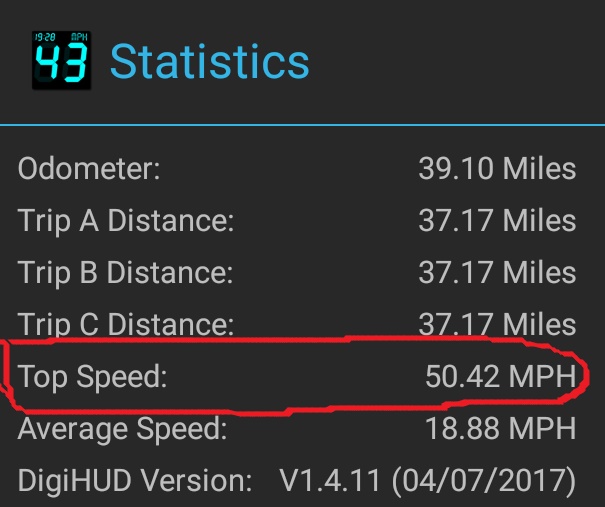
NOTICE / DISCLAIMER
Results will surely vary. These little two stroke engines are very sensitive to changes in temperature, humidity / barometric pressure, elevation etc. Your tuning will be specific to your environment, expectations, rider weight, riding style etc. Each person will end up with their own specific formula, while this posting is merely a generic baseline.
The Benelli is a full sized sport scooter with 12 inch wheels. It weighs 215 pounds. It’s nearly the size of a 600 sport-bike. With that stated, the street tuned Benelli Quattronove is not a power wheelie machine.
Smaller, lighter, under-powered scooters with 10 inch wheels wheelie very easily.
Most advertised top speed numbers in the 50-70cc scooter realm are based on riding downhill, with the rider in a tucked position. To obtain the flat ground / rider sitting straight up top speed of the machine, simply subtract 3-5 MPH.
For example, my scooter’s top speeds are; 51 MPH tucked rider / riding downhill, 47 MPH tucked rider / flat ground and 45 MPH no tuck / flat ground. I am sometimes prompted to refer to it as it a 50 MPH bike, while it is more realistically a 45 MPH bike.
TORQUE TUNING RATIONALE
The scooter community, it’s fans and it’s critics, spend way too much time worrying about ‘Top Speed’. So many people beg the question, ‘How Fast Does That Thing Go?’, when a machine’s top speed has nothing to do with everyday performance on the street.
The base logic for any sort of performance tuning is to tune a machine for optimum performance in a specific environment. By general rule, the smaller the track, the more relative torque is of importance.
REFERENCE
Everything one needs to know about the 1E40QMB engine / scooter is obtained in the two stroke sections on 49ccscoot.com and 90GTVert on youtube. A gold mine of information. Countless step by step articles, pictures and videos, showing you how to diagnose, repair and modify these Minarelli / JOG / 1E40QMB platform scooters.

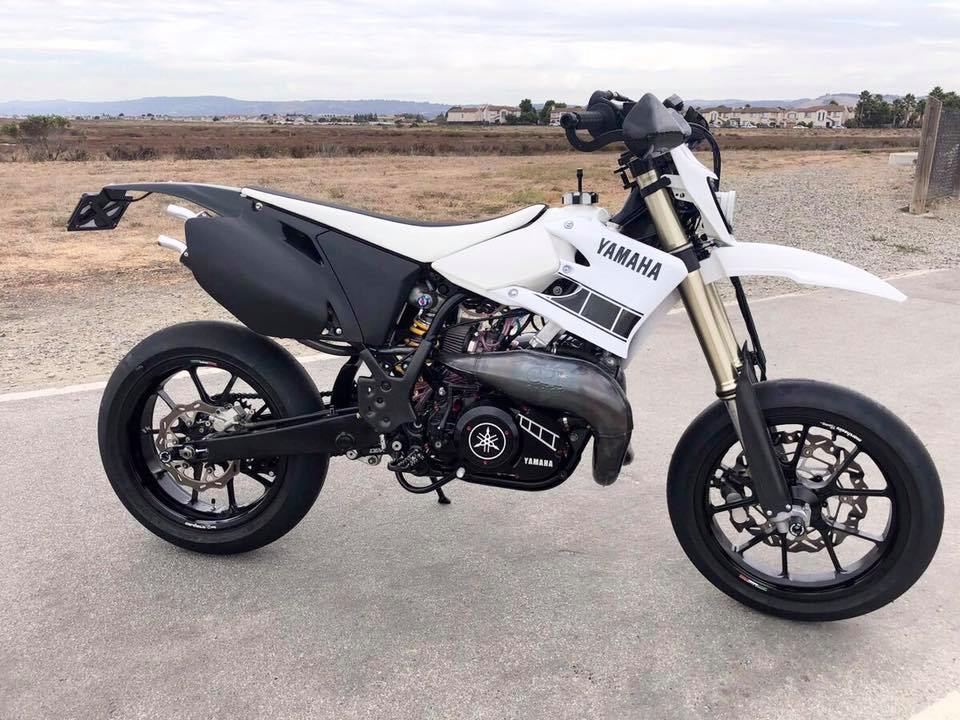
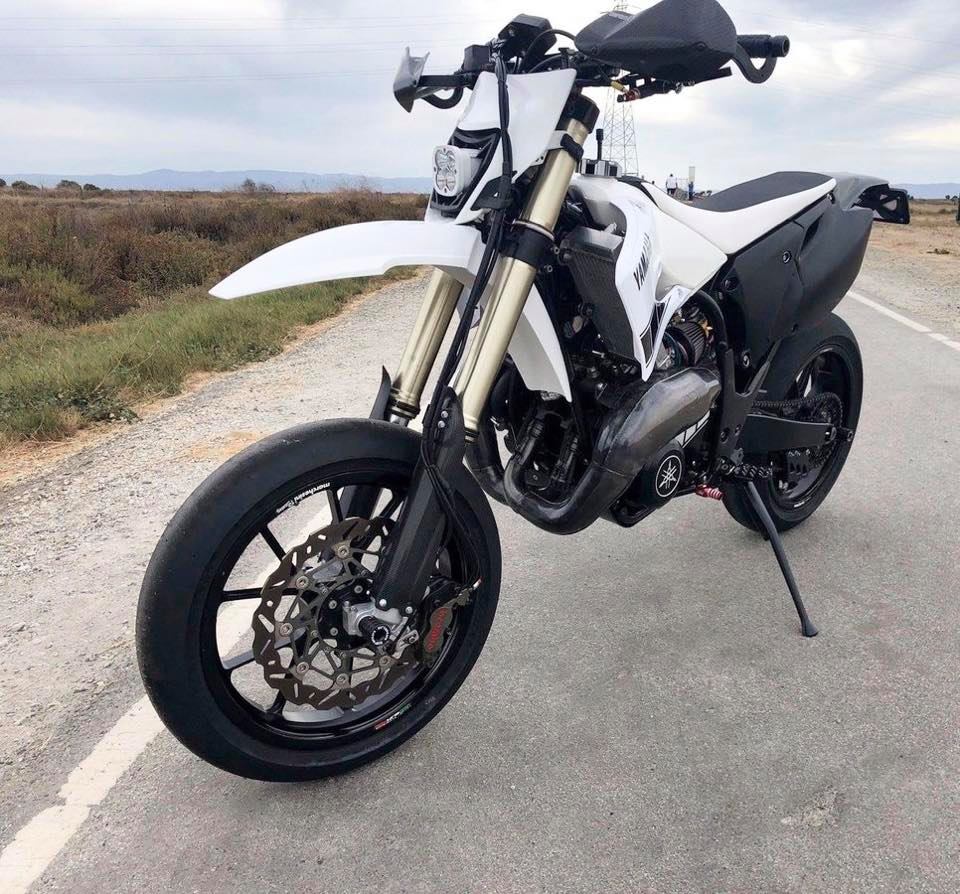



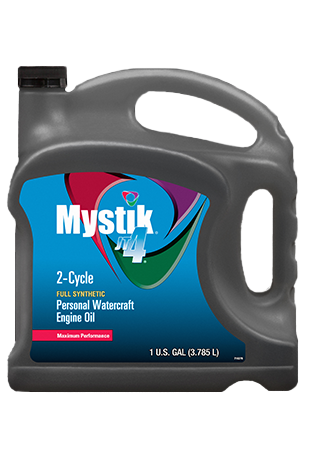
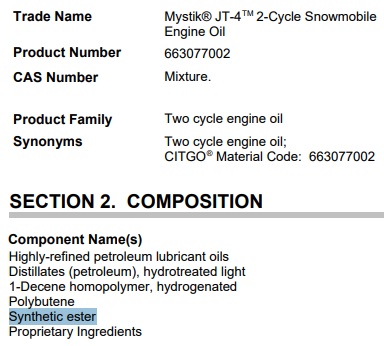
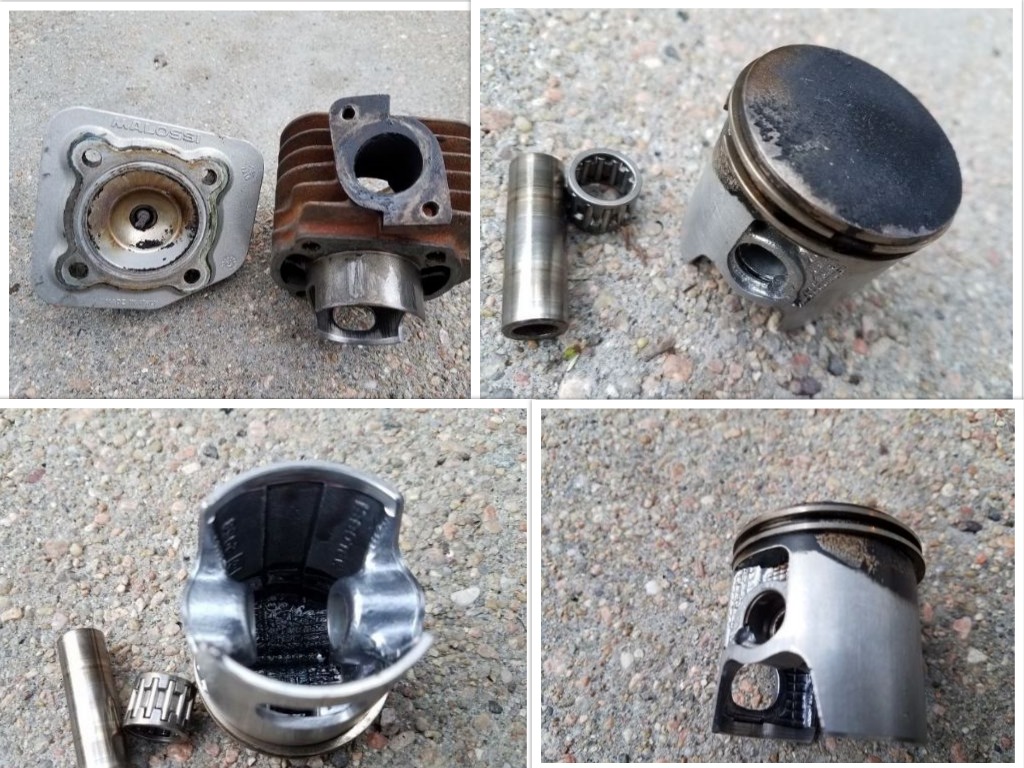

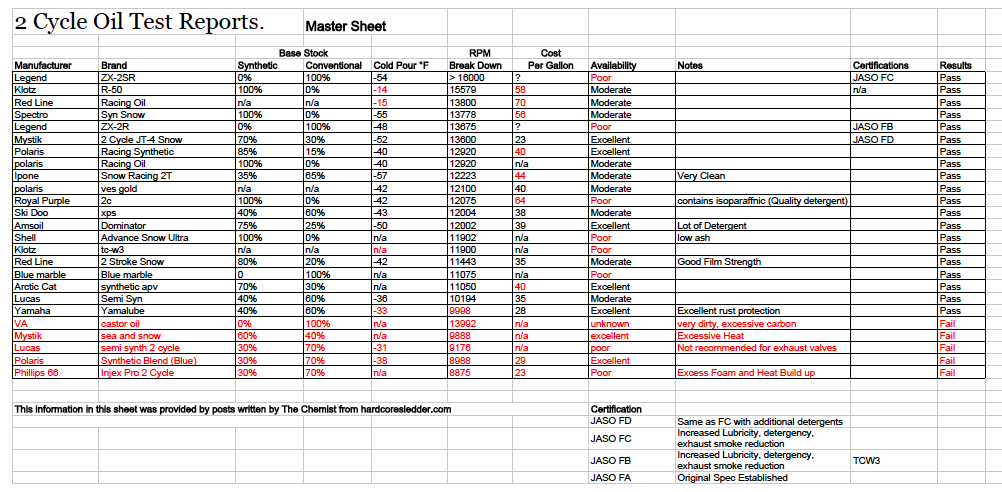




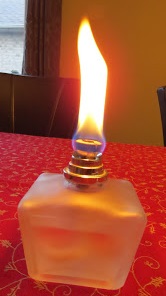

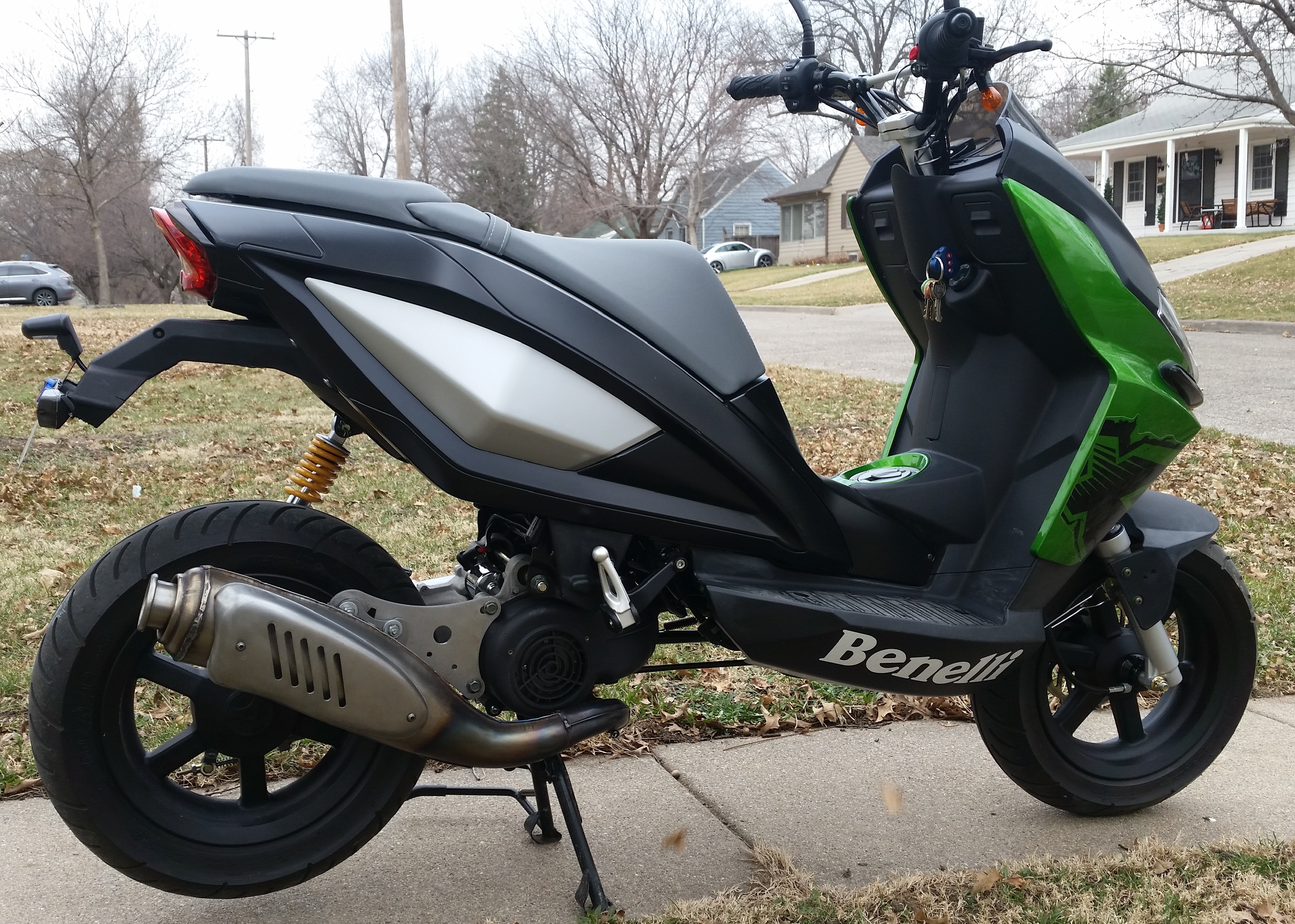 BENELLI QUATTRONOVE – 70cc TWO STROKE – 50 MPH
BENELLI QUATTRONOVE – 70cc TWO STROKE – 50 MPH